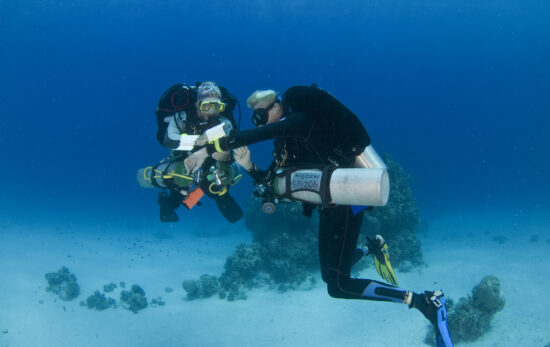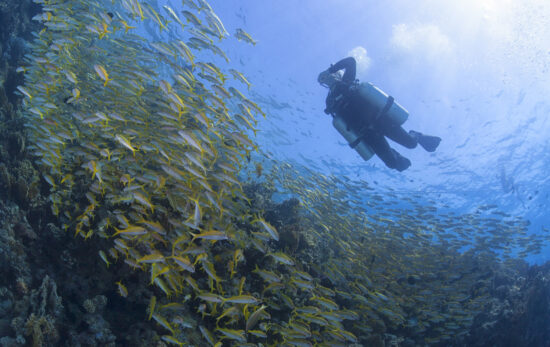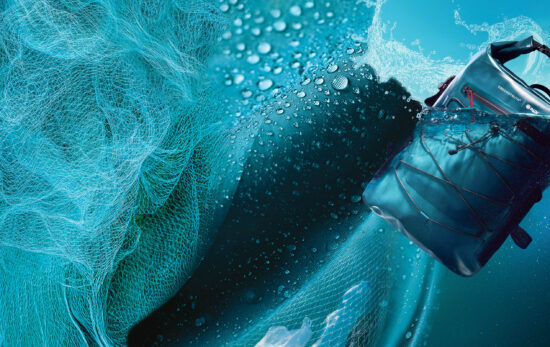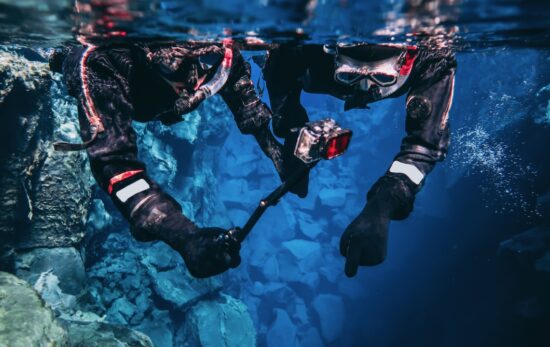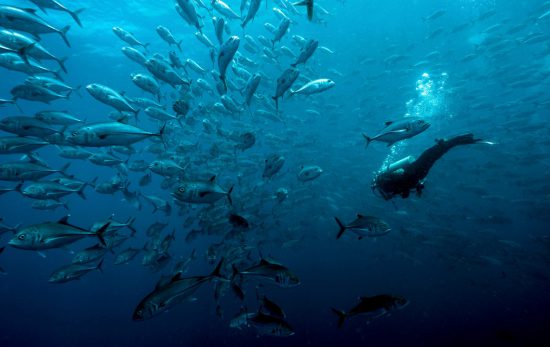This article was written Scott Cadreau and originally published on the TecRec blog on September 4, 2012.
I first heard of the Vitric in the summer of 2011 when I was starting my technical diving classes with Horizon Divers in Key Largo, FL. Dan Dawson (Owner of Horizon and one of my Tec Instructors) said that we would try to make it my last dive in my full Trimix class. We needed the weather and seas and the Gulf Stream to cooperate. As it turns out, these three items don’t get together very often.
After hearing about the wreck, I spent some time on the internet digging around for some information on the dive. Even though it went down in 1944 and is relatively close to Key Largo, no one identified it until 2000 when Mike Rodriguez heard about it from local fisherman. The ship was 165’ (50m) long and 36’ (11m) wide and was used as a cargo ship when it sank. Its cargo that day was primarily 130,000 gallons of syrup. The reports that our group had heard was that there wasn’t much left of the wreck, except the large tanks for holding the syrup.
Living in Phoenix, it is not an easy trip to get out to Florida to dive. After my Tec Deep class, I made several trips to continue my training. Every trip, the Vitric was on our radar but the stars just wouldn’t align. With all of the great dive sites in Key Largo, it wasn’t a huge deal to not make a trip to the Vitric, although some days it seemed to be taunting me.
As it turns out, six trips later, we had our opportunity. The weather forecast was good. The seas were calm. The Gulf Stream was far enough away from the wreck to allow us the opportunity. I was in town for some Instructor training and had booked an extra day for the chance to make the dive. The forecast told us to hold until Tuesday so I changed my flight, extended my hotel and car. Tuesday morning came and the forecasters seemed to be spot on Dan had a busy morning filling tanks for the dive. There were four divers, and we used twenty total tanks. We had a bottom mix, travel gas, which we would also use for our initial decompression, and we each carried two more cylinders for deco. Two of us each carried an extra cylinder of emergency gas should major problems occur. We used about 600 cubic feet of helium to make this dive possible.
Around noon, all the gas was mixed, and we were starting to get excited. We ran a dive plan of 15 minutes of bottom time, which gave us an 84 minute total run time. We all copied the deco schedule to our wet notes as well as all of the lost gas scenarios. Since 300 foot (91m) dives are not common, most of the staff and frequent divers at the shop knew we were making the dive. The shop was slightly abuzz. We got a few odd looks from the normal divers as the four of us hauled 20 tanks to our boat. With all of the gas analyzed and labeled and the dive plan calculated, it was time to get in the boat and prepare for the fairly short ride out. We double checked that we had all we needed and shoved off.
On board, we had Captain Mike and very able mate Jame. The divers were Dan, Luke (with camera in tow), Tim and me. We discussed with the crew our plan and emergency procedures. We don’t want to put into action any of the emergency procedures, but we have to make sure everyone knows what to do if something does come up. As we passed Molasses Reef (which is reportedly named because of the spill of Molasses from the Vitric), we mused that some of the captains moored there were probably confused as to where we were going. As we passed the reef and the water started to gain depth, everyone got into serious mode. We spotted the wreck on the sonar and did a surface current test. Even though we knew that we could have multiple current changes on the way down, you had to go with the best information we could get. The wind was about 5 knots, and the seas were 1 to 2 feet. We dropped the block, and it just sat there. Not a note of current!
We all started to gear up. This is really going to happen. Jame and Mike were helping us get all of our tanks clipped off, and we all ran through our gas tests. There is nothing like testing Helium mixes to get the party going. I opted to go off the side of the boat with a back roll, while the other three were leaving from the swim platform in the back. Mike spotted us 100 feet (30m) from the wreck in the direction the normal current runs. This would give us a better chance if there was current below us. “Dive. Dive. Dive!” We all entered the water without problem. After adjusting everything from the roll and settling in for the descent, I looked around into crystal clear blue water and was at peace. Diving is such a wonderful thing! I gave a couple of kicks to get in line with my team, and we all gave the okay. By about 100 feet (30m), we were making good speed downward. We arrived at 160 feet (49m) in about two minutes. This was our planned switch depth to our bottom gas. We all switched without any incident.
I am not sure (I will have to examine my computer data) where the cooler water actually started, but it seemed to hit like a brick wall at about 240 feet (73m). I do know my computer said 59.9 degrees Fahrenheit (15.5 degrees Celsius) and learned later that Luke’s read as low as 58.3 degrees Fahrenheit (15 degrees Celsius). This is quite a contrast to a surface water temperature of 86 degrees Fahrenheit (30 degrees Celsius)! About that same depth, the visibility seemed to drop to about 50 feet (15m). Maybe the cold water affected my vision. Shortly after the initial shock of cold, I saw something in the sand. It looked like an old pipe. It was definitely not natural. We are close! Dan saw the same thing at about the same time. Another couple feet of descent, and a dark figure appeared before us. We were only 30 to 50 feet (10 to 15m) from the wreck. I shot some gas into my BCD and leveled off at about 285 feet (87m) and swam over to the wreck. We did it! All four of us were smiling ear to ear. Suddenly the cool water wasn’t even noticeable. There was a large Barracuda and a very large school of Amberjack on the wreck. They seemed curious as to our presence. They were not shy at all. I guess they don’t get a lot of human visitors. I am sure some of Luke’s photos will show how close they got.
Once on the wreck, Luke started snapping pictures, Tim was exploring and Dan and I speared some Lionfish. We spent about eight minutes (again, I will have to look at my computer data) on the wreck before we hit our turn pressure. We looked at each other and agreed it was time to go. It seemed like we had just gotten there, and now we were leaving.
We ascended to 210 feet (64m) and Dan shot a bag. It was time for the not-so-fun part of the dive. The only eventful thing during decompression was Luke got a small amount of water in his camera housing, and it set the alarm off. As it turns out, there is no way to silence this alarm underwater. It beeped nonstop for the 50 minute deco.
Once back onboard, everyone was super excited. We all talked about the dive and filled Mike and Jame in on what we saw, laughing about the chilly water and how fast the dive went. Congratulations all around. We headed home with smiles and feelings of accomplishment. At the shop, we retold our story to anyone who wanted to listen. The staff and locals were very happy for us, and it wasn’t hard to tell we were ecstatic.
It is estimated that only between 50 and 100 divers have ever been to the Vitric, and we are lucky enough to be counted in that number. Discussions of another dive with more gas have already begun.
The wreck:
Our understanding from the limited information we were able to gather was that the wreck was not in very good shape, and we would be looking at some molasses pots and rubble. The structure was surprisingly big, since it is primarily made up of the large pots. The mast is in the sand on one side, and the steering section is supposed to be lying just off the main structure. We did not see the steering section on this dive, but it has been reported by other divers. There are a few anchors and chains (assumed from local fishing boats) in the sand near the wreck too. We swam the length of the wreck to give it a quick once-over. We did not bring enough gas to make this a long expedition dive. The pots are large. Even knowing that they had 130,000 gallons, the pots still seemed huge. It would be great to be able to find one of the motorcycles that the ship was supposedly transporting. Finding anything that would 100% identify the ship as the Vitric would be wonderful to come across also. This wreck certainly warrants more dive time to fully understand all that is left.



